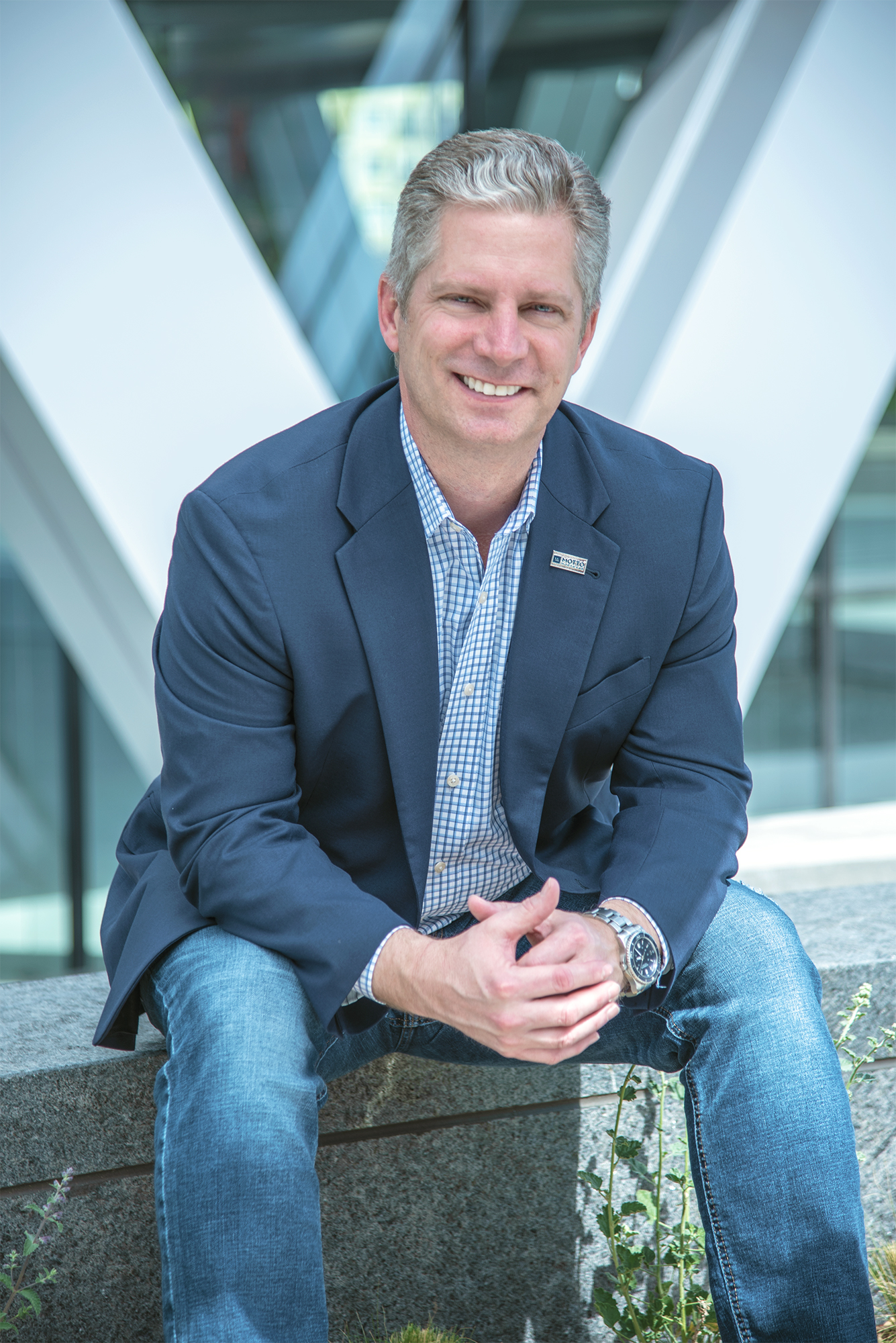Advertisement
How to Foster a Positive Work Environment

As leaders, we all strive to foster positivity in our work environments. Who doesn’t want happy employees and a cheerful office? However, positivity isn’t the true goal in a productive business environment. It should simply be a pleasant and useful symptom of the essential objective of workplace culture efforts–efficiency. With efficiency at the core of your actions, incentives and examples, you can enhance your recruiting efforts, strengthen employee retention, and ultimately, create a positive work environment for your team.
 Think of it this way … you can have an excessively “positive” environment in which work outcomes are chaotic. In truth, the positivity would likely wane as employees begin to lose purpose and self-efficacy due to the lack of focus and goal completion. On the other hand, if you champion efficiency, you can avoid overwhelming your employees while bolstering feelings of success, thus promoting positivity. In other words, efficiency begets positivity in the workplace.
Think of it this way … you can have an excessively “positive” environment in which work outcomes are chaotic. In truth, the positivity would likely wane as employees begin to lose purpose and self-efficacy due to the lack of focus and goal completion. On the other hand, if you champion efficiency, you can avoid overwhelming your employees while bolstering feelings of success, thus promoting positivity. In other words, efficiency begets positivity in the workplace.Efficiency acts as the starting line for positivity. It frees your staff by minimizing needless tasks and work overload. When you have an efficient office, you make room for creativity, ideation, social activities, work-life balance and potency of achievement.
Start by promoting efficiency …
It comes down to trust
In order to lead efficiently, lead with trust. Trusting your employees makes your leadership work more efficient, since you can delegate decision-making. But more importantly, it encourages your employees to maximize their work hours as opposed to viewing their time in the office as hours to be added up. In the former scenario, each team member works diligently to complete high-quality work, knowing you trust them to do so. In fact, research published by the Harvard Business Review in 2017, indicates that employees who work in trusting environments felt more than 75 percent more engaged in their professional duties. Accomplish this by empowering those working in the field to make decisions without fear of criticism and by demonstrating workplace flexibility with a focus on output vs. time-accumulation.
Incentivize efficiency
Positive reinforcement and individual performance evaluation are two additional and essential components of fostering efficiency in the workplace. Publicly acknowledge employees who display exceptional efficiency or, better yet, incentivize efficient performance with monetary rewards. This can tie directly into individual performance evaluations, as can feedback for improvement. When the need arises to train someone on efficiency, rely on your understanding of what’s expected for their efficient workload and discuss that employee’s personal barriers to executing said workload. There may be technology that can assist, or other process-related adjustments that you can make. If external factors aren’t the issue, then the employee can help formulate a plan for their personal improvement. Never hire additional staff as a remedy for lack of efficiency.
 Follow a hiring roadmap
Follow a hiring roadmap
Conversely, ensure your team isn’t overwhelmed with work. Never hold off on hiring a new team member if expansion exceeds your current employees’ bandwidths. Overloaded staff simply cannot function efficiently and will struggle to remain positive and productive. At Motto Franchising LLC, we know from past experience how many clients our support staff members can each handle. The moment we reach that maximum ratio, we add a member to the support team.
When it comes to the management team, follow the “Rule of Seven:” If a manager’s team exceeds seven individuals, it’s time to either promote someone on that team to a managerial role or hire someone else to take on that management role. This supports efficient management, prevents bottlenecking, and mitigates manager burnout. The practice is actually where “middle management” comes from and is a necessary function of efficient and growing teams.
Utilize your best resources
Open-door policy
Your best tool for continued efficiency evolution is your team. As a leader, you might lose touch with the nitty-gritty of your office operations, but everyone in the trenches understands where the bottlenecks are. They see them every day and struggle to hurdle them. Maintain an open-door policy and listen without judgment. I find that by listening carefully and communicating appreciation for candor, employees continually feel they can bring ideas to me, regardless of the implementation outcome. I’ve heard time-saving, money-saving, and value-driving proposals, just to name a few. Not only does this approach improve efficiency, it bolsters morale and communicates the high value you place on the expertise of each employee. It’s essential you don’t rely solely on department heads for this invaluable information—they might not want to say, “My department is inefficient.” However, the employees experiencing those inefficiencies might be more inclined. Just remember never to use this information as punitive ammunition. While a staff member may want to alleviate a bottleneck, it’s extremely rare that they would want to punish a manager or co-worker. Using this information as a watch-dog enforcement tool will stop future ideas from coming through that open door.
Encourage creativity
If you’re not brainstorming or collaborating periodically, you’re missing out on ingenious ideas for efficiency and stifling the creativity that leads to office positivity. Some of the most successful companies in the world build ideation time into the workweek and reap the rewards of improved employee morale and ingenious ideas to drive revenue. In fact, as a product of 3M’s commitment to allowing staff to utilize paid time to innovate, the Post-It Note was born. December and January are ideal times for collaboration. It allows the office to start the new year with fresh ideas and inspires continued creativity.
Solutions only, please
It’s easy to notice problems, to walk into an office and complain, or to use a group brainstorm as an airing of the grievances. To counteract such temptation, add the caveat that ‘new ideas must be solution focused’ to your open-door policy and brainstorming sessions. Focusing on issues might be easy, but it’s not productive. By redirecting staff input to solution-oriented conversations, you channel thoughts in a positive direction while also requiring the employee to evaluate the viability of possible solutions.
Demolish information frustration
Presenting, meeting, and brainstorming with only your own learning style in mind presents another barrier to efficiency—and ultimately positivity. Think about it … the average employee attends about 60 meetings every month. If information is not presented in an easily digestible way, that time is wasted, and the staff involved must seek that information again. Perhaps even more damaging, employees with predominant learning styles that differ from those presenting will likely leave each meeting frustrated, which reduces productivity long after the meeting’s conclusion. Consider diversifying your presentation and meeting formats to accommodate different learning styles and see your efficiency and positivity increase.
Most people lean heavily on one or two learning styles when absorbing and processing information. While many learning styles have been identified over the years, the three basic types are verbal, visual, and tactile. Predominantly tactile learners will likely struggle to remain focused on the typical slide-based presentation, while predominantly visual learners probably won’t retain much from pure discussion formats. Attempt to include all three foundational learning styles in each meeting and presentation to avoid unnecessary stress and to maximize the time spent in those meetings.
Encourage creativity
If you’re not brainstorming or collaborating periodically, you’re missing out on ingenious ideas for efficiency and stifling the creativity that leads to office positivity. Some of the most successful companies in the world build ideation time into the workweek and reap the rewards of improved employee morale and ingenious ideas to drive revenue. In fact, as a product of 3M’s commitment to allowing staff to utilize paid time to innovate, the Post-It Note was born. December and January are ideal times for collaboration. It allows the office to start the new year with fresh ideas and inspires continued creativity.
Solutions only, please
It’s easy to notice problems, to walk into an office and complain, or to use a group brainstorm as an airing of the grievances. To counteract such temptation, add the caveat that ‘new ideas must be solution focused’ to your open-door policy and brainstorming sessions. Focusing on issues might be easy, but it’s not productive. By redirecting staff input to solution-oriented conversations, you channel thoughts in a positive direction while also requiring the employee to evaluate the viability of possible solutions.
Demolish information frustration
Presenting, meeting, and brainstorming with only your own learning style in mind presents another barrier to efficiency—and ultimately positivity. Think about it … the average employee attends about 60 meetings every month. If information is not presented in an easily digestible way, that time is wasted, and the staff involved must seek that information again. Perhaps even more damaging, employees with predominant learning styles that differ from those presenting will likely leave each meeting frustrated, which reduces productivity long after the meeting’s conclusion. Consider diversifying your presentation and meeting formats to accommodate different learning styles and see your efficiency and positivity increase.
Most people lean heavily on one or two learning styles when absorbing and processing information. While many learning styles have been identified over the years, the three basic types are verbal, visual, and tactile. Predominantly tactile learners will likely struggle to remain focused on the typical slide-based presentation, while predominantly visual learners probably won’t retain much from pure discussion formats. Attempt to include all three foundational learning styles in each meeting and presentation to avoid unnecessary stress and to maximize the time spent in those meetings.
Similarly, you’ll notice that some of your staff thrives on efficiency alone while others depend on interpersonal relationships to motivate them. Still, others will crave creativity opportunities. It will behoove you to notice the styles and personalities of each person on your team in order to maximize engagement, productivity, efficiency and positivity. When you strive purposefully toward efficiency, you’ll simultaneously make way for the interpersonal and creative activities that so many of your employees crave.
Ward Morrison is the president of Motto Franchising LLC. With more than 150 franchises sold and more than 100 offices open in 30-plus states, Motto Franchising LLC’s unique national franchise mortgage brokerage model is the first of its kind in the U.S. Under Ward’s leadership, Motto Mortgage has received numerous industry accolades in its short three-year history, including recently ranking on the 2020 Entrepreneur magazine Franchise 500.
This article originally appeared in the January 2020 print edition of National Mortgage Professional Magazine.
About the author





